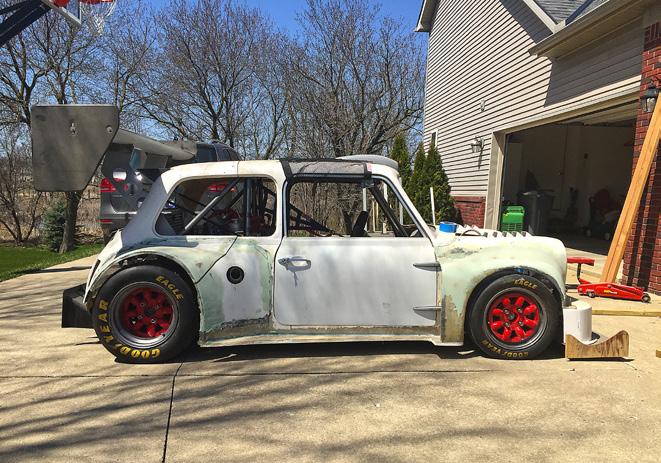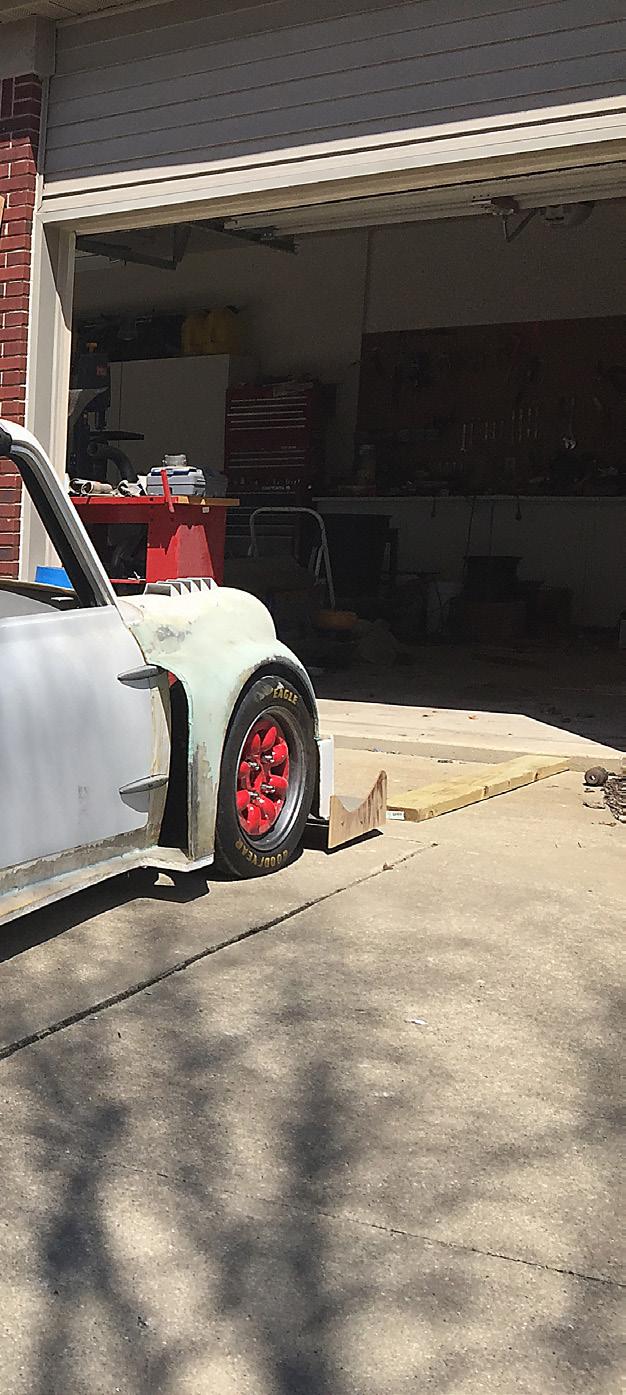
1 minute read
Words and Images by Aric Streeter

Monster
Editors Note: I wanted to cover this car whenever I saw it on the Internet. It reminded me of the Maguire spaceframe Minis that were so common on the circuits during my time in the UK. Only, Aric’s version was on steroids.
MINI


part 1
Monster Mini Part 1, a History and Future Plans I have always been infatuated with both British cars and motorcycle-engined cars. That infatuation came to a head in the mid-2000s, when I started working on plans for a “silhouette” hill climb and circuit racer which became what today is Monster Mini. Finding a mutually interested party in the form of Z-Cars UK founder Chris Allanson, work began on a bespoke design comprising a ground up chassis in 2003/4, loosely based on the shape of a classic Mini, but upgraded in almost every way imaginable, with the current car only keeping the steering rack and the door hinges and latching mechanisms from the original classic. Upon completing the prototype build in the UK, Chris built the core of my chassis, and molded the body panels in GRP, after which time it was sent to me for finishing. Literally 13+ years later, the design has gone through many design improvements, from a redesign and rebuild of the front suspension and geometry to fix some issues with the original design, to a change to a turbocharged and intercooled Hayabusa engine (car was originally built around a normally aspirated mill), strengthening of the axles and rear suspension arms to support the turbo drivetrain, addition of cockpit adjustable anti-roll bars, a paddle shift system, a DBW ECU system, and a substantial “Pikes Peak-inspired” aero package. All the changes were made to hone the car’s ultimate capabilities as a hill climb and circuit racer, with final weight to power numbers coming in at better than 4:1 (>550BHP/metric ton) with driver, putting it in the same league as top spec Time Attack and hyper/super cars, all while targeting greater downforce than vehicle weight at 100MPH. It’s expected that the car will be able to closed circuit lap times approaching Formula Atlantic and SCCA sports racer classes, and be competitive for overall FTD in










